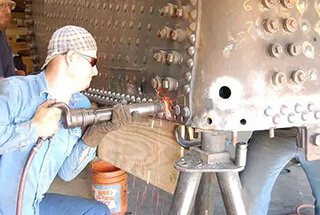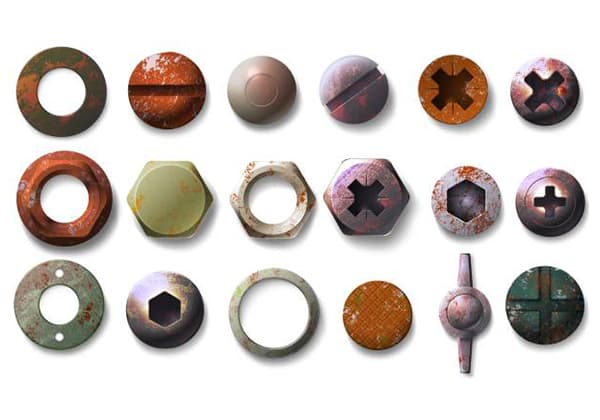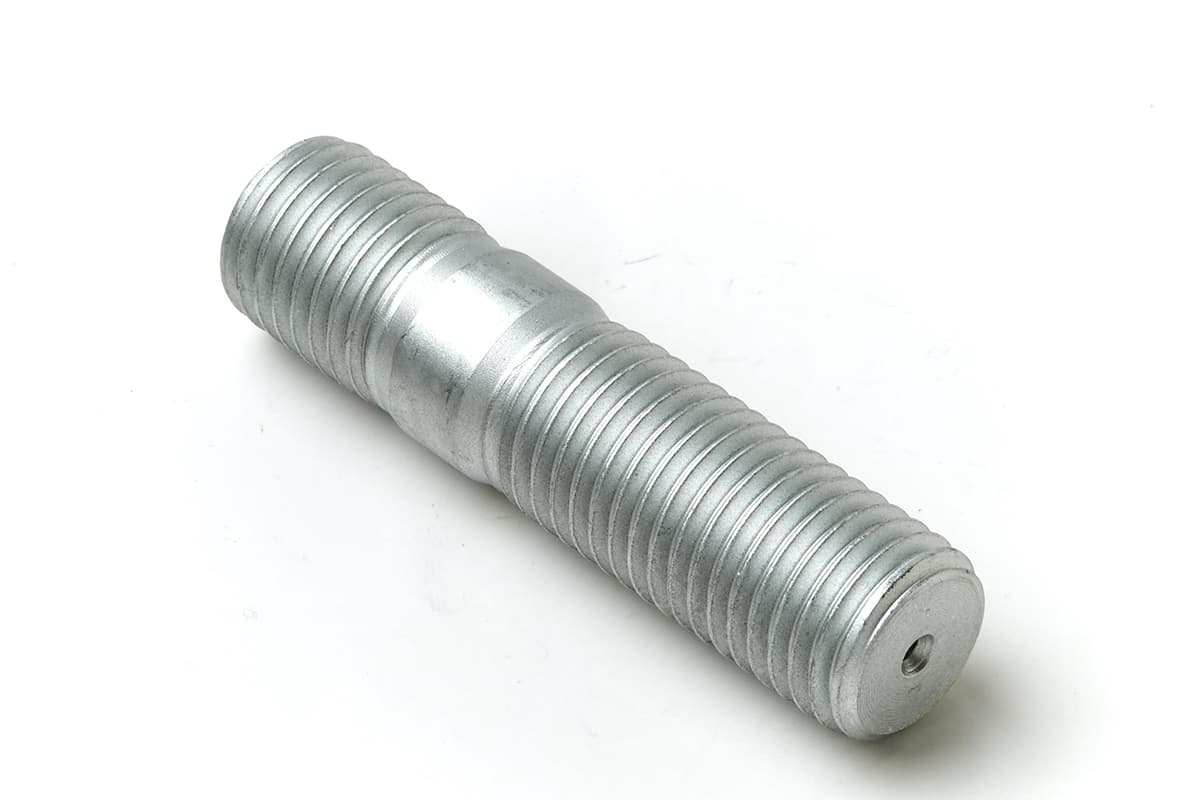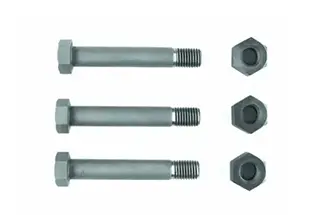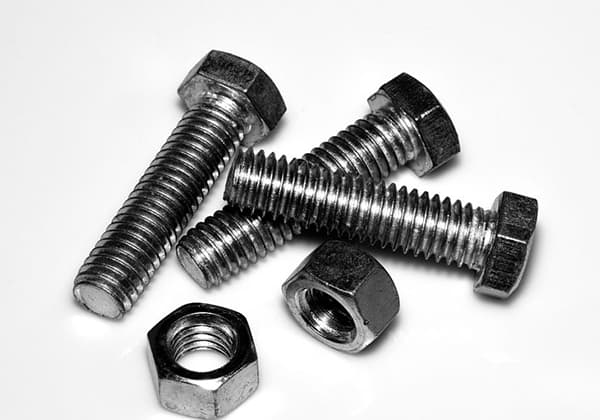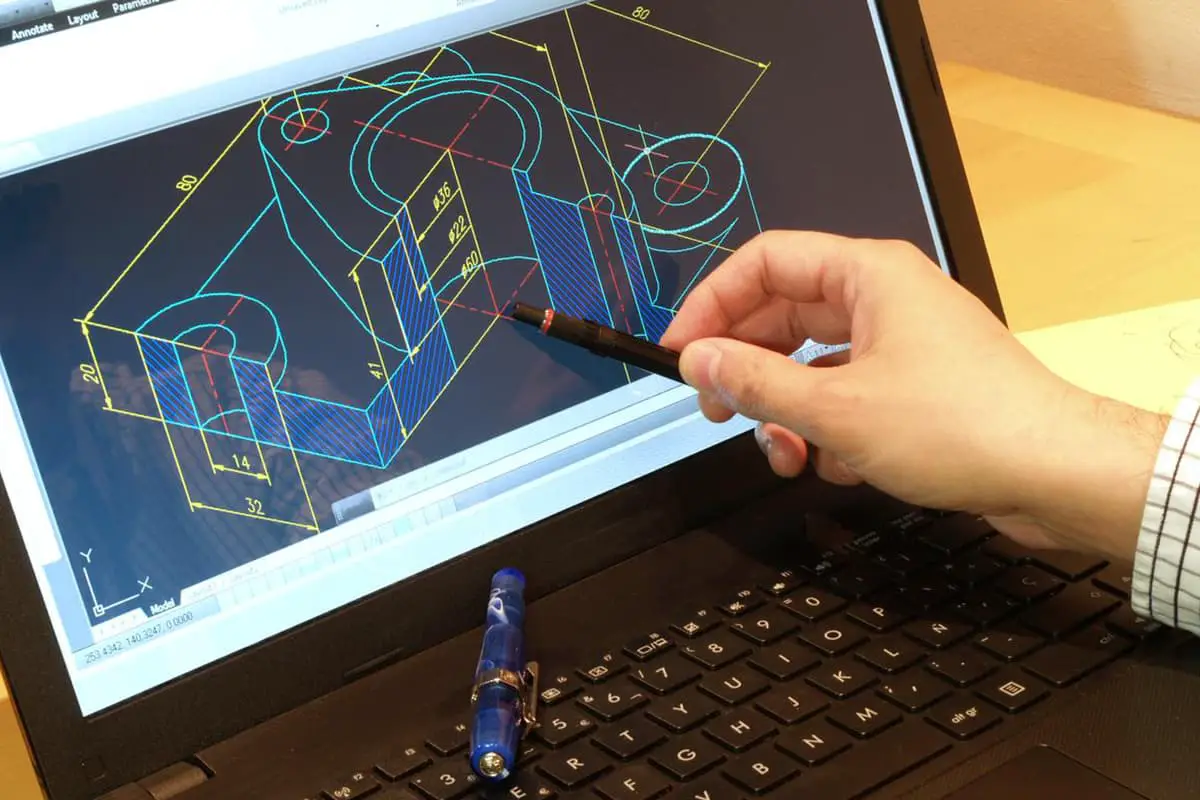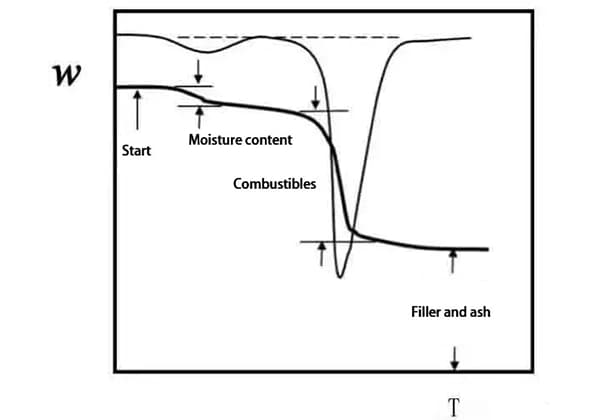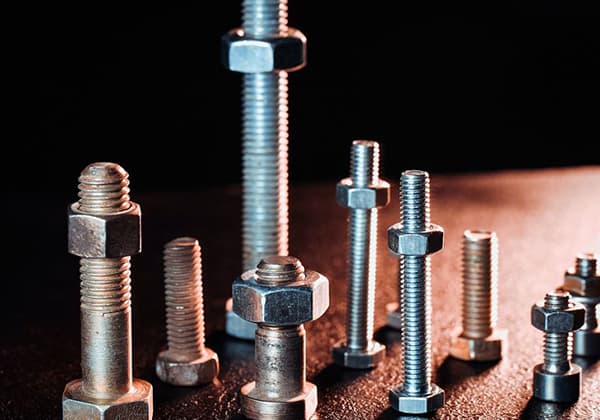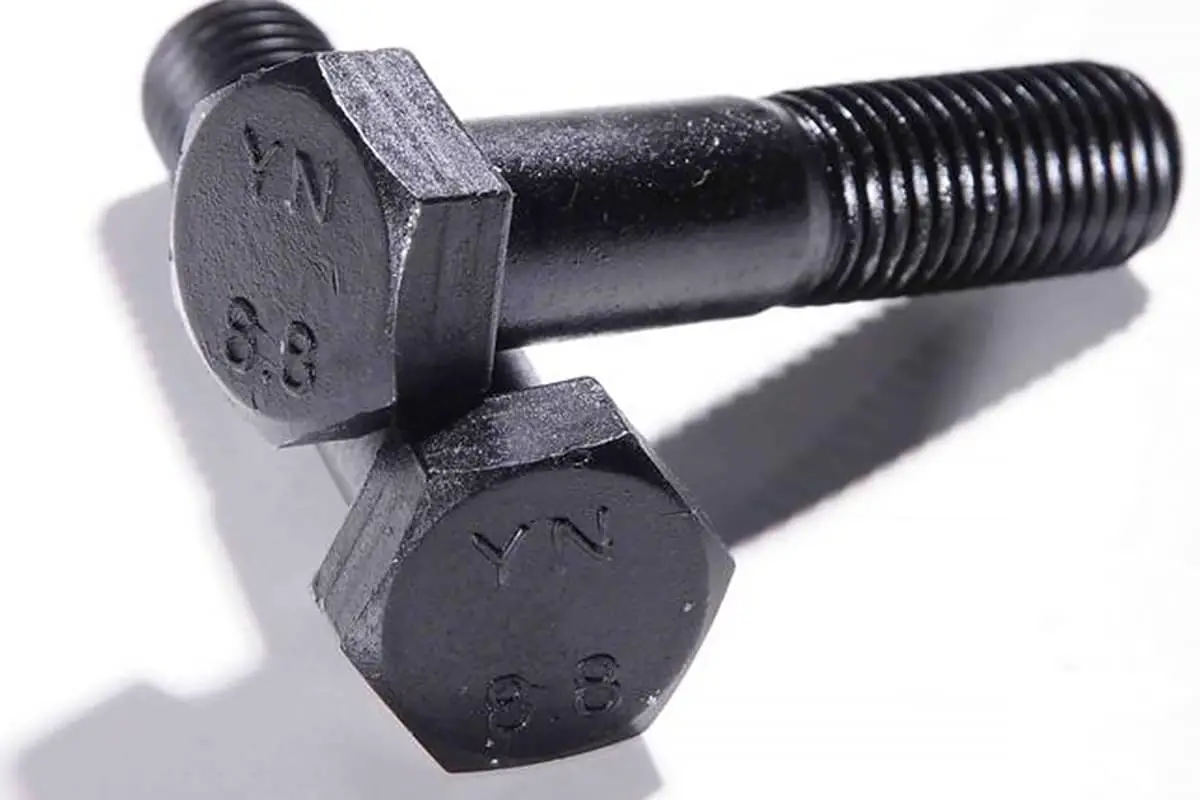
Have you ever thought about the hidden strength behind the bolts holding our world together? This article explores the fascinating world of bolt weights and strength grades, revealing how these small components play a crucial role in engineering. Get ready to uncover the secrets of bolt specifications and their impact on structural integrity!
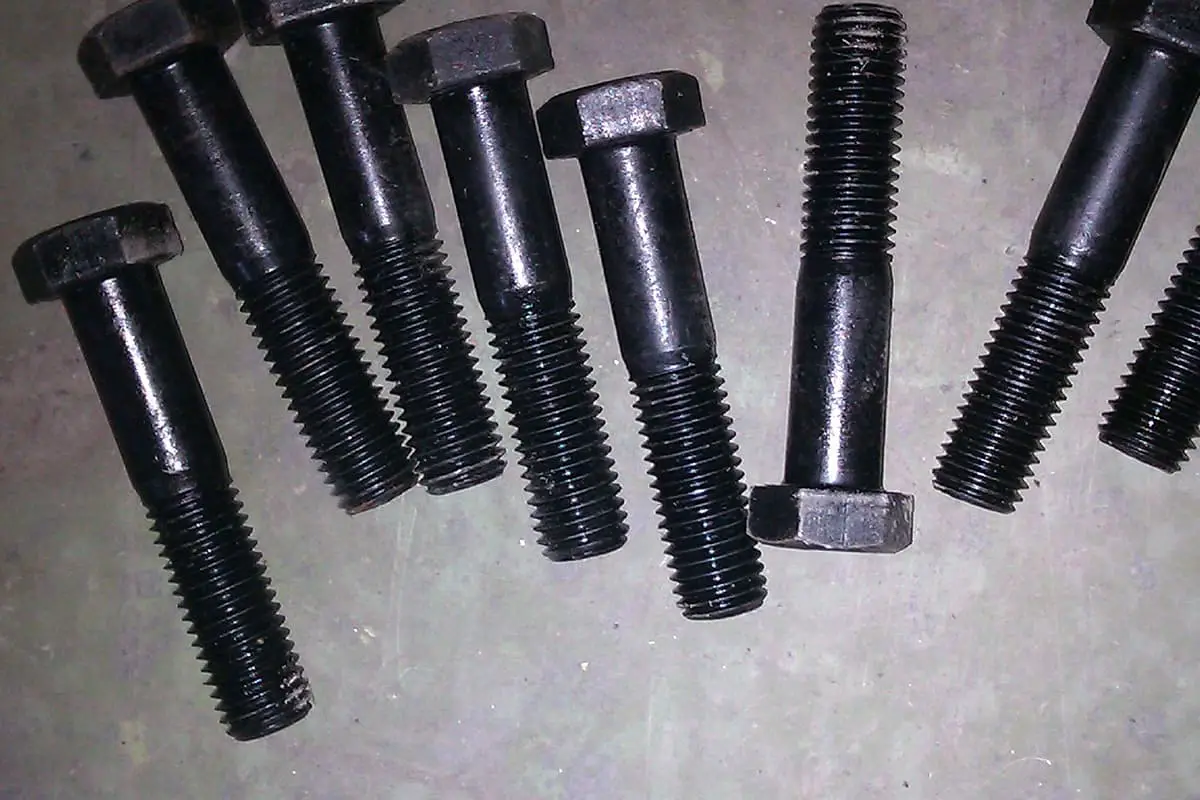

The theoretical weight of bolts, including those with and without nuts, can be calculated using a segmented approach.
| Specification (Diameter × Length) | Weight per Thousand Bolts (Kg) | Specification (Diameter × Length) | Weight per Thousand Bolts (Kilograms) | ||
| Without Nut | With Nut | Without Nut | With Nut | ||
| M10×30 | 29 | 40 | M14×80 | 117 | 142 |
| M10×40 | 35 | 46 | M14×90 | 129 | 154 |
| M10×50 | 41 | 52 | M16×40 | 92 | 126 |
| M10×60 | 47 | 58 | M16×50 | 106 | 140 |
| M12×30 | 41 | 57 | M16×60 | 122 | 156 |
| M12×40 | 49 | 65 | M16×70 | 138 | 172 |
| M12×50 | 58 | 74 | M16×80 | 154 | 188 |
| M12×60 | 67 | 83 | M16×90 | 170 | 204 |
| M12×70 | 76 | 92 | M16×100 | 185 | 219 |
| M12×80 | 85 | 101 | M20×50 | 183 | 245 |
| M14×40 | 69 | 94 | M20×60 | 205 | 267 |
| M14×50 | 81 | 106 | M20×70 | 230 | 292 |
| M14×60 | 93 | 118 | M20×80 | 255 | 317 |
| M14×70 | 105 | 130 | M20×90 | 279 | 341 |
| M20×100 | 304 | 366 | M22×160 | 548 | 624 |
| M20×110 | 329 | 391 | M24×80 | 388 | 500 |
| M20×120 | 354 | 416 | M24×90 | 424 | 536 |
| M20×130 | 378 | 440 | M24×100 | 459 | 571 |
| M22×60 | 250 | 326 | M24×110 | 495 | 607 |
| M22×70 | 280 | 356 | M24×120 | 531 | 643 |
| M22×80 | 310 | 386 | M24×130 | 566 | 678 |
| M22×90 | 339 | 415 | M24×140 | 602 | 714 |
| M22×100 | 369 | 445 | M24×150 | 637 | 749 |
| M22×110 | 399 | 475 | M24×160 | 673 | 785 |
| M22×120 | 429 | 505 | M27×80 | 519 | 687 |
| M22×130 | 459 | 535 | M27×90 | 564 | 732 |
| M22×140 | 489 | 565 | M27×100 | 609 | 777 |
| M22×150 | 519 | 595 | M27×110 | 654 | 822 |
| M27×120 | 699 | 867 | M30×170 | 1154 | 1388 |
| M27×130 | 744 | 912 | M30×180 | 1210 | 1444 |
| M27×140 | 789 | 957 | M30×190 | 1266 | 1500 |
| M27×150 | 834 | 1002 | M30×200 | 1322 | 1556 |
| M27×160 | 879 | 1047 | M30×210 | 1378 | 1612 |
| M27×170 | 924 | 1092 | M30×220 | 1434 | 1868 |
| M27×180 | 969 | 1137 | M36×110 | 1246 | 1617 |
| M30×100 | 765 | 999 | M36×120 | 1326 | 1697 |
| M30×110 | 820 | 1054 | M36×130 | 1406 | 1777 |
| M30×120 | 875 | 1109 | M36×140 | 1486 | 1857 |
| M30×130 | 931 | 1165 | M36×150 | 1566 | 1937 |
| M30×140 | 986 | 1220 | M36×160 | 1646 | 2017 |
| M30×150 | 1042 | 1276 | M36×170 | 1726 | 2097 |
| M30×160 | 1098 | 1332 | M36×180 | 1806 | 2177 |
| M36×190 | 1886 | 2257 | M42×230 | 3095 | 3694 |
| M36×200 | 1966 | 2337 | M42×240 | 3204 | 3803 |
| M36×210 | 2046 | 2417 | M42×250 | 3313 | 3912 |
| M36×220 | 2126 | 2497 | M48×150 | 3005 | 3962 |
| M36×230 | 2206 | 2577 | M48×160 | 3147 | 4104 |
| M36×240 | 2286 | 2657 | M48×170 | 3289 | 4246 |
| M42×150 | 2223 | 2822 | M48×180 | 3431 | 4388 |
| M42×160 | 2332 | 2931 | M48×190 | 3573 | 4530 |
| M42×170 | 2441 | 3040 | M48×200 | 3715 | 4672 |
| M42×180 | 2550 | 3149 | M48×210 | 3857 | 4814 |
| M42×190 | 2659 | 3258 | M48×220 | 3999 | 4956 |
| M42×200 | 2768 | 3367 | M48×230 | 4141 | 5098 |
| M42×210 | 2877 | 3476 | M48×240 | 4283 | 5240 |
| M42×220 | 2986 | 3585 | M48×250 | 4432 | 5389 |
| M48×260 | 4574 | 5531 | M48×280 | 4858 | 5815 |
| M48×300 | 5142 | 6099 | |||
Ordinary bolts are divided into Grade A, Grade B (refined bolts), and Grade C (rough bolts).
Grade A and B bolts use Grade 5.6 and 8.8 steel, while Grade C bolts use Grade 4.6 and 4.8 steel. High-strength bolts are made from Grade 8.8 and 10.9 steel. In Grade 10.9, for example, 10 indicates the tensile strength limit of the steel material is fu=1000N/mm², and 0.9 indicates the yield strength of the steel material is fy=0.9fu. Other models follow this convention. Anchor bolts use Q235 or Q345 steel.
Grade A and B bolts (refined bolts) are made from billets rolled into shape. The bolt rod surface is smooth, dimensions are accurate, and the bolt holes are drilled using a die or first punched on individual parts with a smaller hole, then re-drilled to the designed diameter on assembled components (known as Class I holes). The gap between the bolt diameter and hole is very small, allowing only about 0.3mm, requiring gentle hammering during installation for shear and tensile strength.
However, manufacturing and installation of Grade A and B bolts (refined bolts) are labor-intensive and expensive. In steel structures, they are used only at important installation nodes or in bolt connections that bear both shear and tensile loads from dynamic forces.
Grade C bolts (rough bolts) are made by pressing round steel. Their surface is rougher, and dimensions are less precise. The bolt holes are punched in one go or drilled without a die (Class II holes), and the hole diameter is 1-2mm larger than the bolt diameter. This results in significant shear deformation under shear forces, and individual bolts may contact the hole wall and suffer excessive internal forces leading to early failure.
Due to the simplicity and lower cost of manufacturing Grade C bolts (rough bolts), they are commonly used in various steel structure projects, especially suitable for connections that bear tensile forces along the bolt axis, detachable connections, and temporary fixing components.
In connections with significant shear forces, supports or other structural measures are used to bear the shear forces, allowing the bolt to utilize its tensile strength advantages.
Grade C bolts can also be used in secondary connections subject to static or indirect dynamic loads as shear connections.
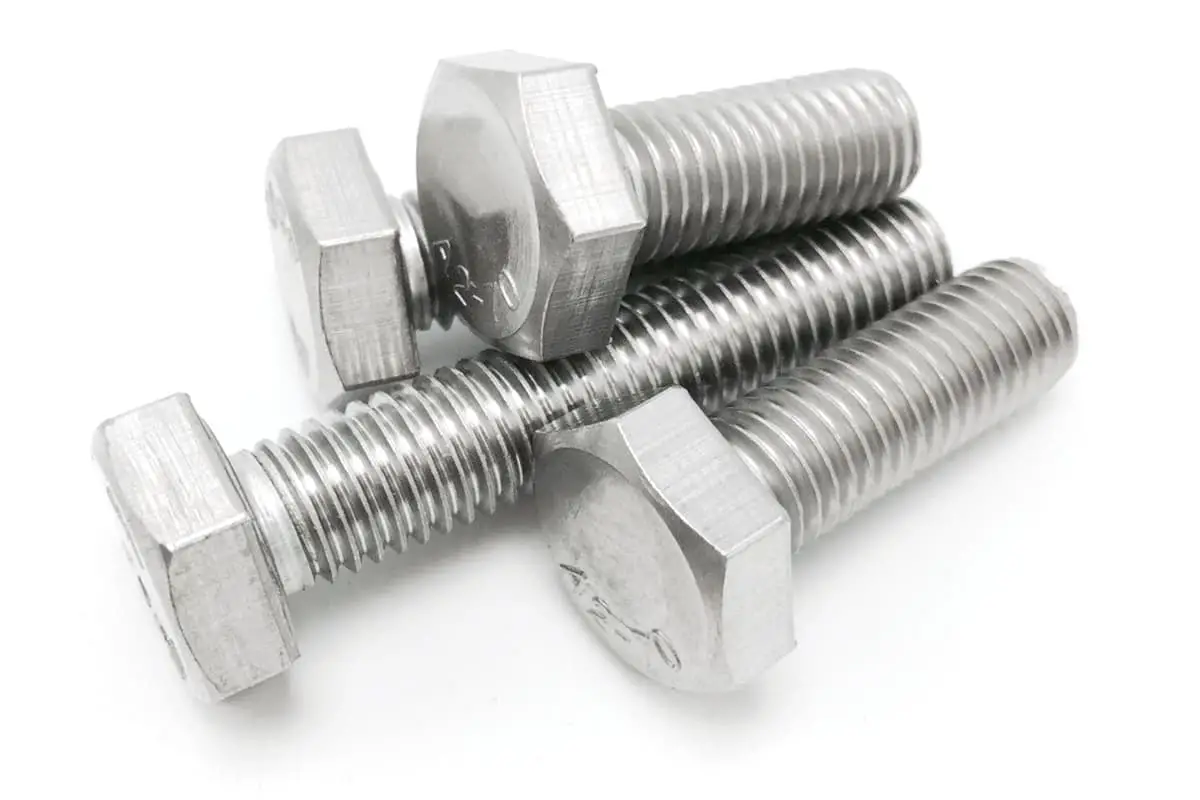
Stainless steel high-strength bolts possess high strength and resistance to corrosion by air, steam, water, and other weak corrosive media, as well as acids, alkalis, and salts. They do not suffer from corrosion, pitting, rusting, or wear.
Stainless steel is also among the strongest materials used in construction. Due to its excellent corrosion resistance, it ensures the permanent integrity of structural components in engineering design.
Steel structure connection bolt performance grades are divided into more than ten grades including 3.6, 4.6, 4.8, 5.6, 6.8, 8.8, 9.8, 10.9, 12.9.
Bolts of Grade 8.8 and above are made of low-carbon alloy steel or medium-carbon steel and undergo heat treatment (quenching, tempering), commonly known as high-strength bolts, while the rest are known as ordinary bolts.
Bolt performance grade markings consist of two numbers, indicating the nominal tensile strength and yield strength ratio of the bolt material.
High-Strength Bolts are made of high-strength steel, or bolts that require significant pre-tensioning force. They are widely used in bridges, railways, high-pressure and ultra-high-pressure equipment connections. These bolts often fail due to brittle fracture.
High-strength bolts used in ultra-high-pressure equipment need to apply significant pre-stress to ensure the container’s seal.
A few concepts about high-strength bolts: 1. Bolts with performance grades above 8.8 are known as high-strength bolts. The current national standard only lists up to M39, and for larger sizes, especially lengths greater than 10~15% times the diameter, domestic production is still limited.
High-strength bolts differ from ordinary bolts in that they can withstand greater loads than standard bolts of the same specification. Ordinary bolts are made from Q235 (A3) steel. High-strength bolts are made from 35# steel or other high-quality materials and undergo heat treatment to increase their strength. The primary difference lies in the material strength.
From the raw material perspective, high-strength bolts are made from high-strength materials. The screw, nut, and washer of a high-strength bolt are all made from high-strength steel, commonly using 45# steel, 40 boron steel, 20 manganese titanium boron steel, 35CrMoA, etc. Ordinary bolts are usually made from Q235 (equivalent to former A3) steel.
In terms of strength grade, high-strength bolts, increasingly used, typically come in 8.8s and 10.9s grades, with 10.9 being more common. Ordinary bolts have lower strength grades, generally at 4.4, 4.8, 5.6, and 8.8.
Regarding the characteristics of force-bearing, high-strength bolts apply pre-tension and transmit external forces through friction. Ordinary bolt connections rely on the bolt rod’s shear resistance and hole wall pressure to transmit shear forces. The pre-tension generated when tightening the nut is minimal and can be considered negligible.
In contrast, high-strength bolts, apart from their high material strength, are applied with significant pre-tension, creating a compressive force between connected components. This produces substantial friction perpendicular to the bolt axis. The pre-tension, slip resistance coefficient, and type of steel material directly affect the load-bearing capacity of high-strength bolts.
Based on the force-bearing characteristics, they are divided into bearing-type and friction-type. Both types have different calculation methods. The smallest standard for high-strength bolts is M12, commonly used sizes range from M16 to M30, and the performance of super-large bolts is unstable, requiring careful consideration in design.
The difference between friction-type and bearing-type connections in high-strength bolts:
High-strength bolt connections clamp the connected plates tightly through significant pre-tensioning force within the bolt shaft, generating substantial friction, thus enhancing the overall integrity and stiffness of the connection. When subjected to shear forces, they can be divided into friction-type and bearing-type high-strength bolt connections, differing fundamentally in their limit states.
Although the same bolt type, their calculation methods, requirements, and application scopes vary significantly. In shear-resistant design, the limit state for friction-type high-strength bolt connections is the maximum possible frictional force provided by the tightening force of the bolts between the contact surfaces of the plates, ensuring that the external shear force does not exceed this maximum frictional force throughout the service period.
The plates do not undergo relative sliding deformation (maintaining the original gap between the bolt shaft and hole), and the connected plates are subject to elastic forces as a whole. In bearing-type high-strength bolt connections, the external shear force is allowed to exceed the maximum frictional force, causing relative sliding deformation between the connected plates until the bolt shaft contacts the hole wall.
Subsequently, the connection transfers forces through the shear of the bolt shaft, pressure on the hole wall, and friction between the plate surfaces, with the ultimate shear failure of the connection being either shear of the bolt shaft or pressure on the hole wall.
In summary, friction-type and bearing-type high-strength bolts are essentially the same bolts, differing only in whether slip is considered in the design. Friction-type high-strength bolts must not slip; they do not bear shear forces, and any slip is considered a failure in design, a technically mature approach. Bearing-type high-strength bolts can slip and also bear shear forces, with ultimate failure similar to that of ordinary bolts (either shear of the bolt or compression of the steel plate).
In terms of usage: For the bolted connections of main structural components in buildings, high-strength bolts are generally used. Ordinary bolts can be reused, whereas high-strength bolts cannot and are typically used for permanent connections.
High-strength bolts are prestressed bolts. In friction-type applications, a specified pre-tension is applied using a torque wrench, while in bearing-type applications, the spline is sheared off. Ordinary bolts, with poorer shear resistance, can be used in less critical structural areas and only need to be tightened. Ordinary bolts are generally of grades 4.4, 4.8, 5.6, and 8.8. High-strength bolts are commonly of grades 8.8 and 10.9, with 10.9 being more prevalent.
Grade 8.8 and 8.8S are equivalent. The force-bearing performance and calculation methods of ordinary bolts differ from those of high-strength bolts. High-strength bolts bear force primarily through internal pre-tensioning force P, creating frictional resistance on the contact surfaces of the connected components to withstand external loads, whereas ordinary bolts directly bear external loads.
More specifically: High-strength bolt connections offer advantages like simple construction, good force-bearing performance, replaceability, fatigue resistance, and resistance to loosening under dynamic loads, making them a promising connection method.
High-strength bolts are tightened with a special wrench, generating a large, controlled pre-tension. This pre-tension, transmitted through the nut and washer, creates an equivalent pre-compressive force on the connected components. Under this pre-compressive force, significant friction is generated along the surfaces of the connected components.
As long as the axial force is less than this frictional force, the components will not slip, and the connection will remain intact. This is the principle behind high-strength bolt connections.
High-strength bolt connections rely on the friction between contact surfaces of the connected components to prevent sliding. To ensure sufficient friction, it is necessary to increase the clamping force between components and enhance the friction coefficient of the contact surfaces.
The clamping force between components is achieved by applying pre-tension to the bolts, necessitating the use of high-strength steel for the bolts, hence the term “high-strength bolt connections.”
In high-strength bolt connections, the friction coefficient significantly influences the load-bearing capacity. Experiments show that the friction coefficient is mainly affected by the nature of the contact surfaces and the material of the components.
To increase the friction coefficient of the contact surfaces, construction often involves methods like sandblasting or wire brushing to treat the contact surfaces within the connection area.
High-strength bolts actually come in two types: friction-type and bearing-type. The design criterion for friction-type high-strength bolts is that the shear force induced by the design load does not exceed the frictional force. For bearing-type high-strength bolts, the criterion is that the bolt shaft is not sheared or the plates are not crushed.
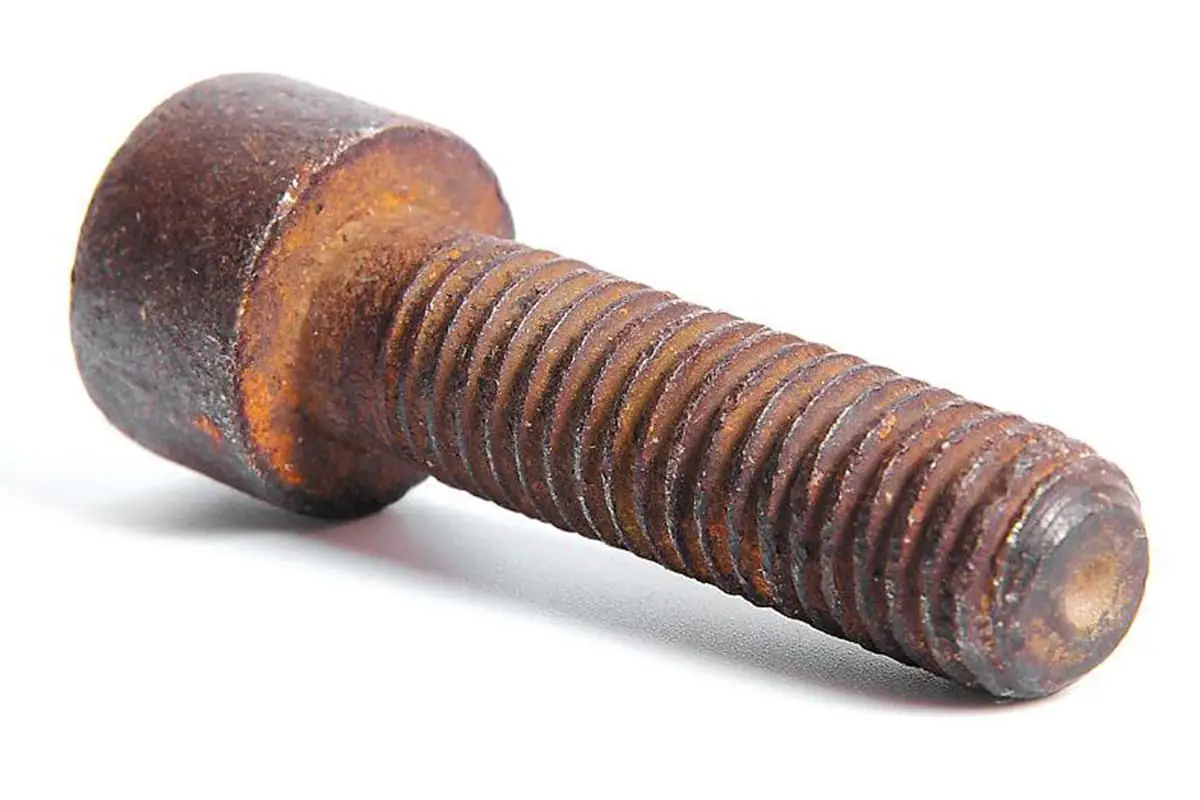
Stainless steel high-strength bolts are known for their corrosion resistance characteristics.
All metals react with oxygen in the atmosphere, forming an oxide film on their surface. Unfortunately, the iron oxide formed on ordinary carbon steel continues to oxidize, causing rust to expand and eventually create holes. Carbon steel surfaces can be protected with paint or oxidation-resistant metals (like zinc, nickel, and chromium) through electroplating. However, as is commonly known, this protective layer is only a thin film. If the protective layer is damaged, the underlying steel begins to rust.
Stainless steel’s corrosion resistance depends on chromium. However, since chromium is a component of the steel, the method of protection is different. When the chromium content reaches above 11.7%, the steel’s resistance to atmospheric corrosion significantly increases.
Although higher chromium content can still improve corrosion resistance, the effect is less pronounced. This is because alloying steel with chromium changes the type of surface oxide, similar to the oxide formed on pure chromium metal. This tightly adherent chromium-rich oxide protects the surface from further oxidation. This oxide layer is extremely thin, allowing the steel’s natural luster to shine through, giving stainless steel its distinctive appearance.
Moreover, if the surface layer is damaged, the exposed steel surface will react with the atmosphere to self-repair, reforming this “passive” oxide film and continuing its protective role. Therefore, all stainless steel elements share a common characteristic: their chromium content is above 10.5%.
The performance grades of screws and bolts for steel structure connections are divided into more than ten levels, including 3.6, 4.6, 4.8, 5.6, 6.8, 8.8, 9.8, 10.9, 12.9.
Bolts of grade 8.8 and above are made from low-carbon alloy steel or medium-carbon steel and undergo heat treatment (quenching and tempering), commonly known as high-strength bolts. The rest are generally referred to as ordinary bolts.
The performance grade of a bolt is denoted by two numbers, indicating the nominal tensile strength and the yield strength ratio of the bolt material. For example:
For a grade 4.6 bolt:
For a grade 10.9 high-strength bolt, after heat treatment, it can reach:
The significance of the bolt performance grade is an internationally standardized criterion. Bolts of the same performance grade, regardless of their material and origin, have the same performance, and in design, it is sufficient to select based on the performance grade alone.
The strength grades, such as 8.8 and 10.9, refer to the bolt’s resistance to shear stress, measured at 8.8 GPa and 10.9 GPa, respectively.
For example, a grade 4.8 bolt:
Additionally, stainless steel bolts are often marked as A4-70, A2-70, etc., with a different meaning.
Regarding measurement units: The world primarily uses two systems for measuring length. One is the metric system, using meters (m), centimeters (cm), millimeters (mm), etc., widely used in Europe, China, Japan, and other Southeast Asian regions. The other is the imperial system, using inches (inch), equivalent to the old Chinese market inch, predominantly used in the United States, the United Kingdom, and other Western countries.
Threads are a form of helical structure found on the external or internal surface of a solid, characterized by a uniform helical ridge. Based on their structural features and applications, they are categorized into three main types:
Thread fit refers to how loosely or tightly mating threads engage with each other. The fit grade is determined by the combination of deviations and tolerances applied to the internal and external threads.
(1) Unified Thread Standard:
External threads have three grades: 1A, 2A, and 3A. Internal threads have three grades: 1B, 2B, and 3B. All these are clearance fits, with higher grade numbers indicating tighter fits.
In Unified threads, deviations are only specified for 1A and 2A grades. The 3A grade has zero deviation, and the grade deviations of 1A and 2A are equal. The larger the grade number, the smaller the tolerance.
(2) Metric Threads:
External threads have three grades: 4h, 6h, and 6g. Internal threads have three grades: 5H, 6H, and 7H. (Japanese standard thread accuracy grades are divided into I, II, and III levels, with II being the most common). In metric threads, the basic deviation for H and h is zero. The basic deviation for G is positive, and for e, f, and g, it is negative.
(3) Thread Marking
Below are common specifications for pitch (metric) and thread count (imperial):
Specifications: ST 1.5, ST 1.9, ST 2.2, ST 2.6, ST 2.9, ST 3.3, ST 3.5, ST 3.9, ST 4.2, ST 4.8, ST 5.5, ST 6.3, ST 8.0, ST 9.5
Pitches: 0.5, 0.6, 0.8, 0.9, 1.1, 1.3, 1.3, 1.3, 1.4, 1.6, 1.8, 1.8, 2.1, 2.1
Specifications: #4, #5, #6, #7, #8, #10, #12, #14
Thread Counts: AB thread 24, 20, 20, 19, 18, 16, 14, 14; A thread 24, 20, 18, 16, 15, 12, 11, 10

